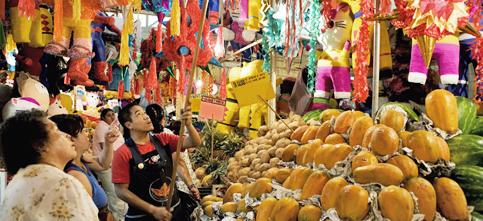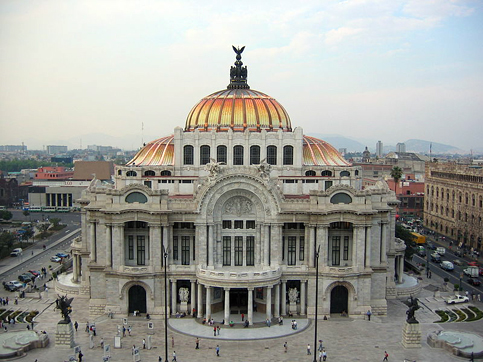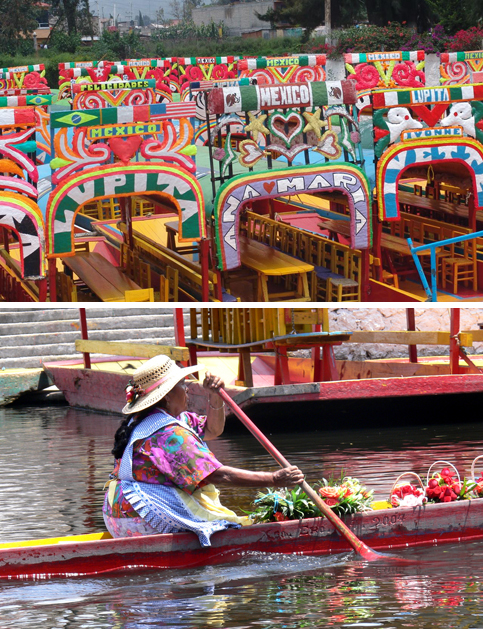Geographical Location and Population
Xochimilco is a city whose history of occupation dates back more than two thousand years. As the seat of an important pre-Hispanic dominion it was conquered by Europeans in 1521. As a colonial city, Xochimilco receives a title of nobility and coat of arms in 1559 from Philip II , King of Spain.
Throughout the colonial period Xochimilco is a food supply centre for the City of Mexico even until the mid its agricultural prominence starts to decrease. It currently has a population of more than four hundred thousand inhabitants, many of them involved in farming and agricultural tasks which retain traditions, myths, customs and identity, making them unique. Population of 368,798.
History
Xochimilco, which in the náhuatl dialect means “place of the flowery orchard” is one of the areas in Mexico City in which the lake-based society that once characterized the whole Valley of México still remains, and takes part in a society full of traditions that has centuries of history, and has been declared Cultural and Natural Heritage of the World by the UNESCO.
The history of Xochimilco dates back to very early stages of the prehispanic era, as it was an area populated from the beginning by indigenous groups that belonged to the villages of Copilco and Cuicuilco in the river-strewn area to the south of the lakes that covered the southern part of the valley. Later, with the arrival of the Xochimilcan tribe, little villages started to be established, and they gave place to some of the towns of the area that remain to this day immersed in the city like Tlahuac, Mixquic or Culhuacan. Agriculture was the main productive activity; maize, chili, beans and courgettes, among others, were grown, in a form of cultivation that would later characterize the whole Anahuac: the famous chinampas, small islands of land built with clay and mud, and fixed among the roots of the ahuejote trees, a species native to the area. This form of cultivation was extremely productive, as the people could obtain up to three harvests a year, thanks to the high mineral content of the land, the abundance of water and the good climate of the region.
Intangible Cultural Heritage
Xochimilco has the privilege of being included in the World Heritage List, its agricultural technology and high productivity, are based on the construction of artificial crops on a shallow lake. The abundance of agricultural production generated a genuine culture, bearing its own identity based on a festive cycle associated with Catholic beliefs. Noteworthy, some of the festivities are linked to ancestral beliefs such as pre-Hispanic agricultural deities, the cult of the dead and the sacred space. The ritual cycle, with strong features of popular Catholicism, begins on February 2nd with the stewardship change for the biggest current deity: the Niñopa, an image depicting a baby Jesus Christ. The celebrations then continue with those associated to the Xaltocán Dolorosa Virgin, an image where the beliefs are strongly linked to the image of the Hispanic goddess of fertility and maintenance. In the month of August is the time one of most important festivals, from the point of view of cult rituals and sacred space: the pilgrimage to the Sanctuary of the Lord of Chalma (about 70 miles away from Xochimilco). To close this cycle is the festival of the dead, when it is materialized the belief in the returning of the ancestors, a sacred ritual of offerings and family gathering. The vast mosaic of festivities in Xochimilco, more than four hundred celebrations, could not be understood without the financial support that the abundance of agricultural production gives. It is in the knowledge of the agricultural technology to build the “chinampa” where lies one of the greatest assets of the intangible heritage of Xochimilco. This knowledge has been passed by more than two thousand years from generation to generation and is required to be preserved with utmost care.







Follow ICCN